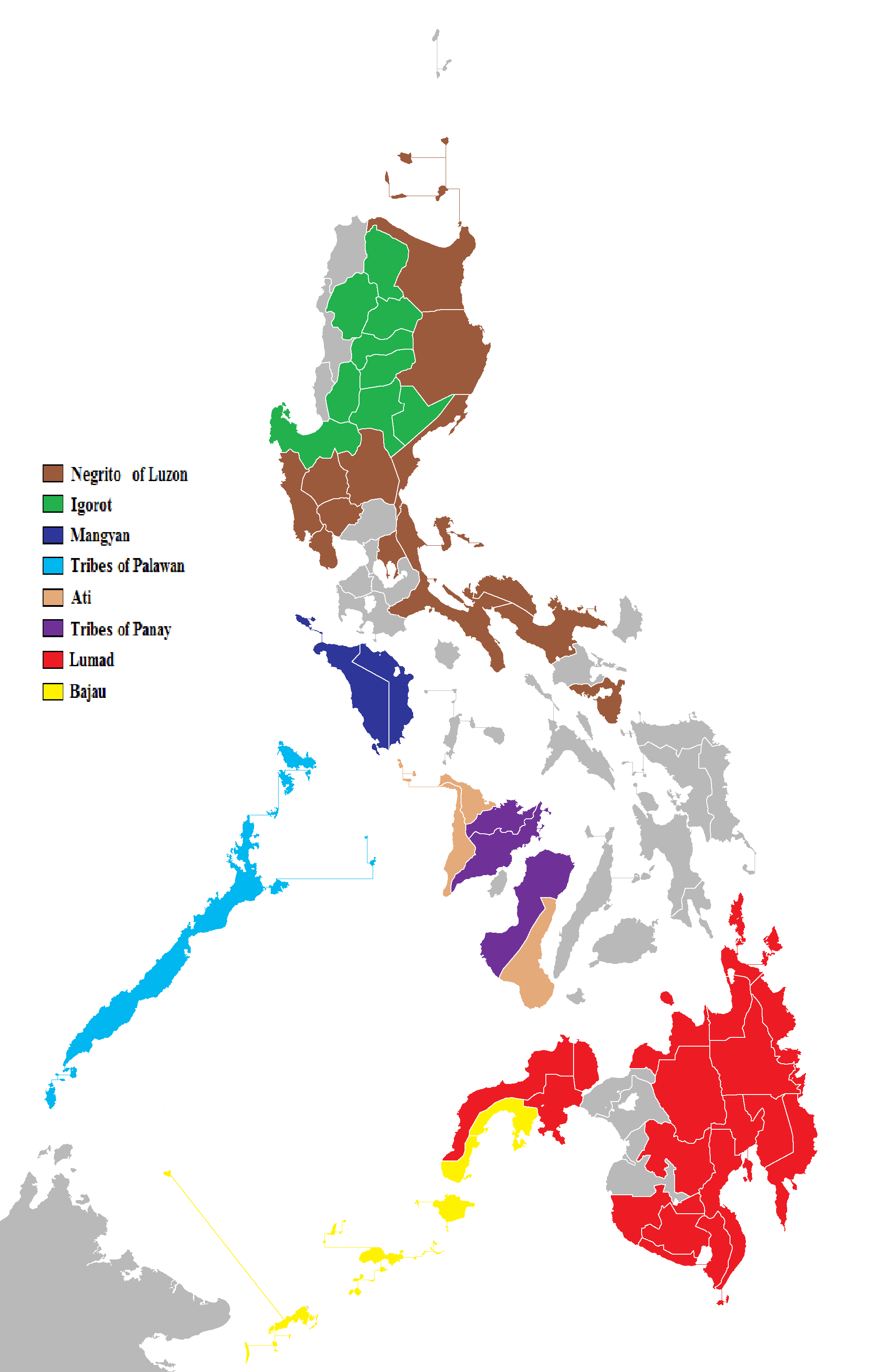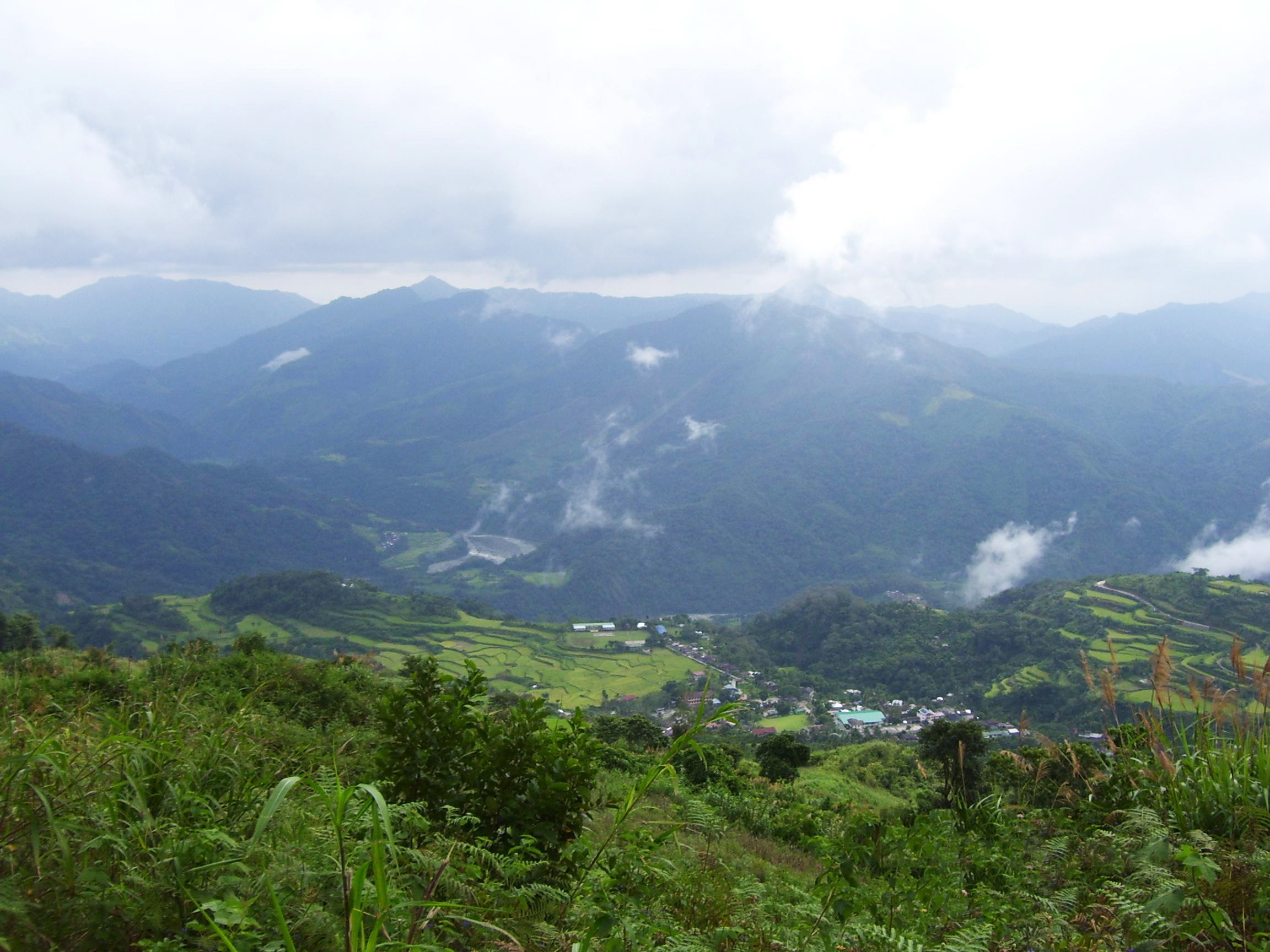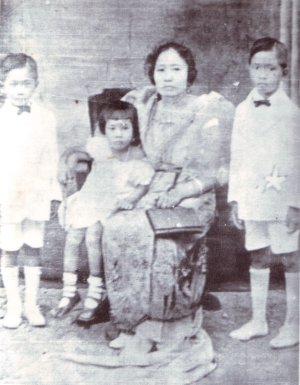|
Indigenous People’s Resistance Against The Marcos Dictatorship
Indigenous people’s resistance against the Marcos dictatorship varied from case to case among the various indigenous peoples of the Philippines. The most documented cases are the various resistance movements towards the Marcos administration’s appropriation of indigenous lands, particularly in the case of the Chico River Dam Project and the Manila Water Supply III project on the Kaliwa River watershed, and the birth of the various separatist groups and their coalescing into the Moro conflict in the wake of news about the Jabidah Massacre. Groups of indigenous peoples were subjected to massacres and other human rights violations throughout the Martial Law era, as was the case of the Subanen family in the Tudela massacre. However, this did not necessarily result in organized opposition from the Indigenous People group as a whole. Indigenous people’s resistance against Marcos dam projects The most prominently documented instances of Indigenous people’s resistance against ... [...More Info...] [...Related Items...] OR: [Wikipedia] [Google] [Baidu] |
Indigenous Peoples Of The Philippines
The Philippines consist of numerous upland and lowland indigenous ethnolinguistic groups living in the country, with Austronesians making up the overwhelming majority, while full or partial Negritos scattered throughout the archipelago. The highland Austronesians and Negrito have co-existed with their lowland Austronesian kin and neighbor groups for thousands of years in the Philippine archipelago. The primary difference is that they were not absorbed by centuries of Spanish and United States colonization of the Philippines, and in the process have retained their customs and traditions. This is mainly due to the rugged inaccessibility of the mountains and established headhunting and warrior cultures, which discouraged Spanish and American colonizers from coming into contact with the highlanders. In the interest of clarity, the term ''indigenous'' as used in the Philippines refers to ethnolinguistic groups or subgroups that maintain lt of partial isolation, or independence, throug ... [...More Info...] [...Related Items...] OR: [Wikipedia] [Google] [Baidu] |
Kalinga (province)
; tl, Lalawigan ng Kalinga) , native_name = , other_name = , settlement_type = , image_skyline = , image_caption = (from top: left to right) Bum-bag Rice Terraces, Pasil Valley, Lubuagan Mountains, Mount Manting-oy, Mount Binuluan and Tabuk City Hall. , image_flag = PH-KAL Flag.png , flag_size = 100x80px , image_seal = , seal_size = 100x80px , image_map = , map_caption = Location in the Philippines , coordinates = , subdivision_type = Country , subdivision_name = , subdivision_type1 = Region , subdivision_name1 = , established_title = Founded , established_date = May 8, 1995 , seat_type = Capital , seat = Tabuk , leader_party = , leader_title = Governor , leader_name = James S ... [...More Info...] [...Related Items...] OR: [Wikipedia] [Google] [Baidu] |
Cordillera Central (Luzon)
The Cordillera Central or Cordillera Range is a massive mountain range 320 km (198 miles) long north-south and 118 km (73 miles) east-west. The Cordillera mountain range is situated in the north-central part of the island of Luzon, in the Philippines. The mountain range encompasses all provinces of the Cordillera Administrative Region ( Abra, Apayao, Benguet, Ifugao, Kalinga and Mountain Province), as well as portions of eastern Ilocos Norte, eastern Ilocos Sur, eastern La Union, northeastern Pangasinan, western Nueva Vizcaya, and western Cagayan. To the north, the mountain range terminates at the northern shores of Luzon along the Babuyan Channel in Ilocos Norte and Cagayan provinces. At its southeastern part, the Central Cordillera is linked to the Sierra Madre Mountains, the longest mountain range in the country, through the Caraballo Mountains in Nueva Vizcaya province. During Spanish colonial period, the whole range was called ''Nueva Provincia'' (New Province). Geogra ... [...More Info...] [...Related Items...] OR: [Wikipedia] [Google] [Baidu] |
Philippine Army
The Philippine Army (PA) ( Tagalog: ''Hukbong Katihan ng Pilipinas''; in literal English: ''Army of the Ground of the Philippines''; in literal Spanish: ''Ejército de la Tierra de la Filipinas'') is the main, oldest and largest branch of the Armed Forces of the Philippines (AFP), responsible for ground warfare and had an estimated strength of 101,000 soldiers backed by 100,000 ready reserves. The service branch was established on December 21, 1935, as the Philippine Commonwealth Army. The Philippine Army has engaged in many conflicts including the ongoing Communist rebellion in the Philippines, the Moro conflict and, alongside other national military forces, in conflicts of international scope. The Commanding General of the Philippine Army is its professional and overall head. Its main headquarters (Headquarters Philippine Army or HPA) is located at Fort Andres Bonifacio, Metro Manila. Background Philippine Revolution (1896–1898) After three centuries of Spanish rule t ... [...More Info...] [...Related Items...] OR: [Wikipedia] [Google] [Baidu] |
Ferdinand Marcos
Ferdinand Emmanuel Edralin Marcos Sr. ( , , ; September 11, 1917 – September 28, 1989) was a Filipino politician, lawyer, dictator, and kleptocrat who was the 10th president of the Philippines from 1965 to 1986. He ruled under martial law from 1972 until 1981 p. 189. and kept most of his martial law powers until he was deposed in 1986, branding his rule as "constitutional authoritarianism" under his Kilusang Bagong Lipunan (New Society Movement). One of the most controversial leaders of the 20th century, Marcos's rule was infamous for its corruption, extravagance, and brutality. Marcos gained political success by claiming to have been the "most decorated war hero in the Philippines", but many of his claims have been found to be false, with United States Army documents describing his wartime claims as "fraudulent" and "absurd". After World War II, he became a lawyer then served in the Philippine House of Representatives from 1949 to 1959 and the Philippine Senate from ... [...More Info...] [...Related Items...] OR: [Wikipedia] [Google] [Baidu] |
Bontocs
The Bontoc (or Bontok) ethnolinguistic group can be found in the central and eastern portions of Mountain Province, in the Philippines. Although some Bontocs of Natonin and Paracelis identify themselves as Balangaos, Gaddangs or Kalingas, the term "Bontoc" is used by linguists and anthropologists to distinguish speakers of the Bontoc language from neighboring ethnolinguistic groups. They formerly practiced head-hunting and had distinctive body tattoos. Geography The Bontoc live in a mountainous territory, particularly close to the Chico River and its tributaries. Mineral resources (gold, copper, limestone, gypsum) can be found in the mountain areas. Gold, in particular, has been traditionally extracted from the Bontoc municipality. The Chico River provides sand, gravel, and white clay, while the forests of Barlig and Sadanga within the area have rattan, bamboo and pine trees. They are the second largest group in the Mountain Province. Social organization The Bontoc social s ... [...More Info...] [...Related Items...] OR: [Wikipedia] [Google] [Baidu] |
Bantayog Ng Mga Bayani
The Bantayog ng mga Bayani (), sometimes simply referred to as the Bantayog, is a monument, museum, and historical research center in Quezon City, Philippines, which honors the martyrs and heroes of the struggle against the dictatorship of former President Ferdinand Marcos. History Immediately following the People Power Revolution in 1986 that ousted President Ferdinand Marcos, Ruben Mallari, a Filipino-American medical doctor visiting the Philippines, proposed the creation of a memorial as a dedication to people who opposed the authoritarian rule of Marcos but didn't live past the People Power Revolution. The Bantayog ng mga Bayani Memorial Foundation was organized as a response to Mallari's suggestion, with Ledivina V. Cariño, former Dean of the University of the Philippines’ College of Public Administration aiding with the creation of a concept paper for the memorial. The foundation soon established a Research and Documentation Committee for the purpose of verifying the ... [...More Info...] [...Related Items...] OR: [Wikipedia] [Google] [Baidu] |
Kalinga-Apayao
Kalinga-Apayao () was a province of the Philippines in the Cordillera Administrative Region in the island of Luzon. It was formed, along with Benguet, Ifugao, and the new Mountain Province, from the earlier Mountain Province, with the passage of ''Republic Act No. 4695'' in 1966. The said law was amended by ''RA No. 7878'' in 1995, which divided the province into two new ones, Kalinga and Apayao. As part of a cult of personality, long-time President Ferdinand Marcos made gradual changes to the borders of Kalinga-Apayao over the course of his rule with the aim of making the outline of the province, on a map, resemble the silhouette of his own head, facing towards his own native province of Ilocos Norte. The plan was unfinished when Marcos was overthrown in 1986. History Prior to the establishment of the province, the sub-provinces of Kalinga and Apayao, upon their establishment through ''Act No. 1642'' in 1907, were used to be part of Lepanto-Bontoc (as Kalinga was taken from Cag ... [...More Info...] [...Related Items...] OR: [Wikipedia] [Google] [Baidu] |
Mountain Province
Mountain Province is a landlocked province of the Philippines in the Cordillera Administrative Region in Luzon. Its capital is Bontoc. Mountain Province was formerly referred to as ''Mountain'' in some foreign references. The name is usually shortened by locals to ''Mt. Province''. The province was named so for being in the Cordillera Central mountain range found in the upper realms of Luzon island. Mountain Province was also the name of the historical province that included most of the current Cordillera provinces. This old province was established by the Philippine Commission in 1908, and was later split in 1966 into Mountain Province, Benguet, Kalinga-Apayao and Ifugao. The province is also known for its mummy caves, which contain naturally mummified bodies, and for its hanging coffins. History Spanish period The area of the Cordillera mountains proved difficult to control by the Spaniards. During the long Spanish rule, not much was done to bring the province under con ... [...More Info...] [...Related Items...] OR: [Wikipedia] [Google] [Baidu] |
Barlig
Barlig, officially the Municipality of Barlig is a 5th class municipality in the province of Mountain Province, Philippines. According to the 2020 census, it has a population of 4,796 people. Geography Barlig is bounded in the east by Natonin in the west by Bontoc and Sadanga. In the north, it is bounded by Tinglayan and in the south by the town of Mayoyao. The town is separated into three settlements or cluster of villages such as Barlig town proper, Lias and Kadaclan. Barangays Barlig is politically subdivided into 11 barangays. These barangays are headed by elected officials: Barangay Captain, Barangay Council, whose members are called Barangay Councilors. All are elected every three years. *Chupac *Fiangtin *Kaleo *Latang *Lias Kanluran *Lias Silangan *Lingoy *Lunas *Macalana *Ogoog *Gawana (Poblacion) Climate Barlig has an oceanic climate (Köppen climate classification ''Cfb'') closely bordering a subtropical highland climate ("Cwb") with relatively dry winters. De ... [...More Info...] [...Related Items...] OR: [Wikipedia] [Google] [Baidu] |
Bauko
Bauko, officially the Municipality of Bauko is a 4th class municipality in the province of Mountain Province, Philippines. According to the 2020 census, it has a population of 32,021 people. Bauko is from the provincial capital Bontoc and from Manila. History Chico River Dam Project Bauko was one of several municipalities in Mountain Province which would have been flooded by the Chico River Dam Project during the Marcos dictatorship, alongside Bontoc, Sabangan, Sadanga, Sagada, and parts of Barlig. However, the indigenous peoples of Kalinga Province and Mountain Province resisted the project and when hostilities resulted in the murder of Macli-ing Dulag, the project became unpopular and was abandoned before Marcos was ousted by the 1986 People Power Revolution. Geography Barangays Bauko is politically subdivided into 22 barangays, divided into the upper and lower areas. These barangays are headed by elected officials: Barangay Captain, Barangay Council, whose members ar ... [...More Info...] [...Related Items...] OR: [Wikipedia] [Google] [Baidu] |
Bontoc, Mountain Province
Bontoc, officially the Municipality of Bontoc ( ilo, Ili ti Bontoc; tl, Bayan ng Bontoc), is a 2nd class municipality and capital of the province of Mountain Province, Philippines. According to the 2020 census, it has a population of 24,104 people. Bontoc is from Manila. Bontoc is the historical capital of the entire Cordillera region since the inception of governance in the Cordillera. The municipality celebrates the annual Lang-ay Festival. Bontoc is home to the Bontoc tribe, a feared war-like group of indigenous people who actively indulged in tribal wars with its neighbors until the 1930s. Every Bontoc male had to undergo a rite of passage into manhood, which may include headhunting, where the male has to journey (sometimes with companions) and hunt for a human head. The Bontoc also used the jaw of the hunted head as a handle for gongs, and as late as the early 1990s, evidence of this practice can be seen from one of the gongs in Pukisan, Bontoc. The town also hosts the ... [...More Info...] [...Related Items...] OR: [Wikipedia] [Google] [Baidu] |





